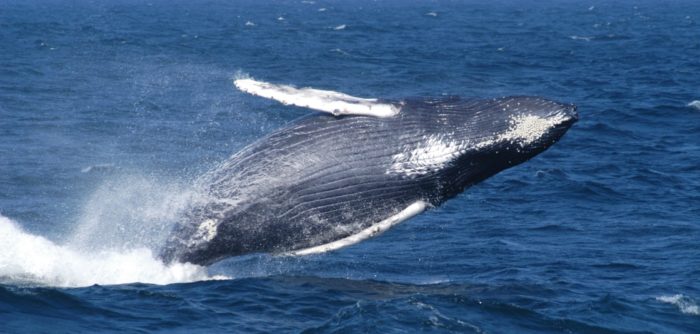Gard, in light of February 16 being ‘World Whale Day’, published a revision on US and Canadian regulations and recommendations concerning whales, aiming at reducing collisions between North Atlantic right whales and ships. ‘World Whale Day’ held annually on the third Saturday in February, was founded in Maui, Hawaii, in 1980, to honour humpback whales, which swim off its coast. Today, the event focuses on the protection of whales that are listed as endangered or threatened.
Today 6 out of the 13 great whale species are endangered, even after decades of protection. So one issue emerges: Protecting whales.
Two of the main reasons why many whale species are endangered are:
- Whaling: The hunting of whales for scientific research and their usable products like meat.
- Ship strikes: Collisions between whales and vessels.
Protecting North Atlantic right whales in Canada and the US
The North Atlantic right whale is one of the world’s most endangered species of large whale. It is mostly found exclusively along the East Coast of Canada and the US.
The human factor it still a major threat to the North Atlantic Right whale.
This made both Canada and the US to implement various measures to prevent ship strikes during times when North Atlantic right whales are likely to be present.
Canadian requirements
In 2019, Transport Canada passes the following measures in the Gulf of St. Lawrence:
- Fixed speed reduction zone:From 28 April to 15 November 2019, all ships 20 m in overall length or more must travel at 10 knots or less in the Western Gulf of St. Lawrence, in a defined area near the Anticosti Island.
- Temporary speed reduction zones: Speed restrictions can be activated in two shipping lanes, north and south of Anticosti Island, when a right whale is spotted in or near the lanes. Each speed restriction will be in force for 15 days. If right whales are not seen with surveillance flights during the 15-day period, the speed restriction will be lifted at the end of the period. Our understanding is that compliance with any temporary speed restrictions in force is mandatory.
US requirements
NOAA annually issues the measures below along the US East Coast:
- Mandatory ship reporting; Ships of 300 gross tonnes and above must report to a shore-based station when entering two key right whale habitats: one in the northeast off the coast of Massachusetts and Cape Cod and one in the southeast off the coast of Georgia and Florida.
- Fixed speed restriction zones; All ships 65 feet (19.8 m) in overall length or more must travel at 10 knots or less in certain locations, referred to as seasonal management areas (SMAs), along the US East Coast. See NOAA’s “Compliance Guide”.

- Temporary speed reduction zones; Voluntary 10 knot speed restriction zones, referred to as dynamic management areas (DMAs), may be established at short notice when right whales are sighted in a certain location.
- Recommended shipping lanes; Recommended shipping lanes have been established within Cape Cod Bay (January through May) and in right whale nursery areas off Georgia and Florida (November through April).
- Voluntary seasonal ‘Area To Be Avoided’ (ATBA); An ATBA has been established in the Great South Channel and ships of 300 gross tons and above are recommended to avoid the ATBA from 1 April 1 to July 31 every year.
Violations of the mandatory North Atlantic right whale speed restrictions can lead to civil administrative penalties being issued against the ship.
In addition, NOAA has activated a voluntary speed reduction zone (DMA) 26 nautical miles south of Nantucket, Massachusetts, to protect an aggregation of 19 right whales that were sighted in this area on 17 February 2019. The DMA is currently active through 5 March 2019 and mariners are requested to route around this area or transit through it at 10 knots or less.




























































